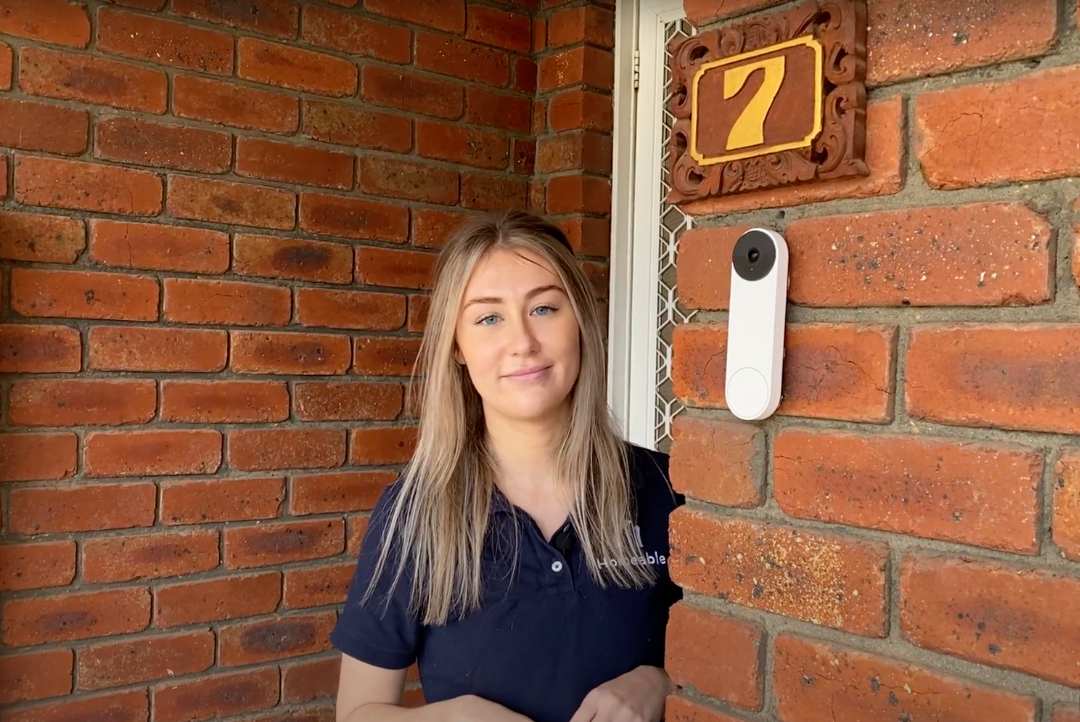Video Doorbells and Accessibility
Video doorbells are not just a contemporary convenience; they are rapidly becoming integral components for enhancing safety and communication, especially for people living with disabilities. Let’s explore how these devices can augment security and accessibility while being respectful of individual needs and autonomy.
Homeable co-founder, Ash, with a Nest Doorbell.
Innovative Features for Enhanced Security
1. Video Surveillance:
Smart doorbells come with embedded cameras offering real-time visual feeds. People with various needs can use this feature to discern who’s at the door before deciding to engage, enhancing privacy and security.
2. Motion Detection:
Receive alerts for approaching individuals or deliveries, even if the doorbell isn’t rung. It fosters awareness of the surroundings and provides an extra layer of security.
3. Two-Way Communication:
Communicate remotely with visitors via a smartphone app, a valuable tool for verifying identities or giving instructions, enhancing both convenience and safety.
4. Remote Access:
Monitor doorstep activities in real-time from any location, adding a layer of security and peace of mind, especially for those managing accessibility needs.
5. Facial Recognition:
An advanced feature that can identify regular visitors, sending notifications for recognised or unfamiliar faces, providing an additional layer of security and awareness.
Handpicked Video Doorbells
1. Nest Doorbell (Battery):
Appreciated for its facial recognition and intelligent alerts. It’s user-friendly and does not necessitate complex installation processes, making it a popular choice.
2. Eufy Security 2K Wireless Doorbell:
Known for offering local storage, negating the need for subscription fees while providing high-quality video and wide-angle views.
3. Ring Battery Doorbell:
Offers coloured night vision and is compatible with Alexa products, promising seamless integration for homes with existing smart devices.
Factors to Consider
Choosing a video doorbell goes beyond just the device; it involves considering subscription services, Wi-Fi frequencies, and compatibility with other smart home systems. For those utilising battery-powered options, periodic charging is essential, and installation ease is always a bonus.
Tailored Solutions for Diverse Needs
Video doorbells stand as an example of how technology can be molded to fit diverse needs, including those with disabilities. They’re not just about security; they’re about enhancing control, autonomy, and accessibility in a world where every individual’s comfort and safety is paramount.
For a personalised approach to integrating smart home technologies that respect and enhance your unique living experience, to reach out to our dedicated team at Homeable or book a Smart Home Assessment.





